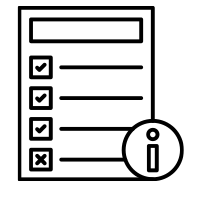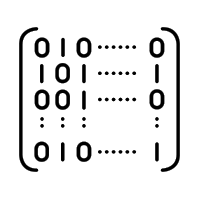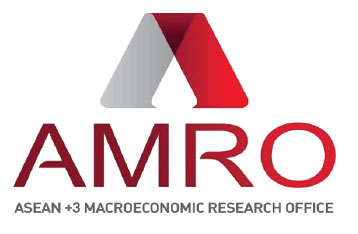What We Do
Supporting RFAs and the implementation of the CMIM
Overview
AMRO provides support to ASEAN+3 member economies to ensure that the Chiang Mai Initiative Multilateralisation (CMIM) arrangement is operationally ready.
Test runs, with the support of AMRO, have been regularly conducted by member authorities under various scenarios since 2013. AMRO has also supported member authorities in laying the groundwork for the ongoing development of CMIM arrangements, providing advice and recommendations to members in developing the future direction of CMIM.
Regional Financing Arrangements (RFAs)
Regional Financial Arrangements (RFAs) are mechanisms or agreements through which groups of countries mutually pledge financial support to countries experiencing financial difficulties in their regions. There are multiple active RFAs globally, with the CMIM providing a financial safety net for the ASEAN+3 region.
Other forms of financial safeguards comprise national foreign exchange reserves, bilateral swap lines, as well as financial assistance from the IMF.
RFAs were typically set up in response to different types of crises, such as those related to currency, sovereign debt or bank runs. Cooperation between RFAs — and between RFAs and the IMF — is crucial to limit the worst effects of the next financial crisis. The first High-Level Dialogue on the role of RFAs was held in 2016 in Washington, D.C., where participants agreed to hold a Joint RFA Research Seminar on an annual basis.
Several joint research and other initiatives have been put in place to enhance the capacities of RFAs, as well as strengthen cooperation among RFAs, and between RFAs and the IMF.
Explore MoreWhat is the CMIM?
With a size of US$240 billion, the CMIM is a multilateral currency swap arrangement among ASEAN+3 members, established under the agreement signed by the ASEAN+3 Finance Ministers and Central Bank Governors that came into effect on March 24, 2010.
Its core objectives are:
- To address balance of payment and short-term liquidity difficulties in the region
- Supplement existing international financial arrangements.
The CMIM facility includes two instruments: for crisis prevention (Precautionary Line) and crisis resolution (Stability Facility) with the option linkage with the IMF facility – an IMF De-linked Portion (IDLP) and an IMF Linked Portion (ILP), with the latter subject to oversight by the IMF.
How the CMIM works
Financing Facilities
CMIM Stability Facility (CMIM-SF) for crisis resolution
The CMIM-SF is for actual balance of payments and/or short-term liquidity difficulties. Any ASEAN+3 member is entitled to request the activation of swap transactions of their local currencies with the U.S. dollar or local currencies of other ASEAN+3 countries.
CMIM Precautionary Line (CMIM-PL) for crisis prevention
The CMIM-PL is for potential balance of payments and/or short-term liquidity difficulties. Any ASEAN+3 member can request to establish swap lines of their local currencies with the U.S. dollar or local currencies of other ASEAN+3 countries.
Relationship between CMIM-SF and CMIM-PL
The total amount that can be drawn by each member country, either for prevention or resolution purposes, should be within the maximum arrangement amount set aside for that country. Dual drawing from CMIM-SF and CMIM-PL is restricted.
Governance and decision making
Two coordinating countries
Coordination on CMIM discussions will be conducted by the two countries as represented by the Co-chairs. One of the Co-chairs is appointed from ASEAN member states and the other from the Plus Three countries (China, Japan and Korea), with appointments rotating alphabetically on an annual basis.
Decision making
Fundamental issues, such as the total size of the CMIM and contribution of each CMIM party, will be determined by a consensus approval at the Ministerial Level Decision Making Body (MLDMB), which consists of ASEAN+3 Finance Ministers and Central Bank Governors.Executive level issues, such as initial execution of drawing, renewal of drawing and events of default, will be determined by a two-thirds majority vote at the Executive Level Decision Making Body (ELDMB), which comprises the deputy-level representatives of ASEAN+3 Finance Ministries and Central Banks, and the Hong Kong Monetary Authority.
Conditions precedents and covenants
The CMIM party that requests the CMIM arrangements must meet a set of conditions precedent before the ELDMB takes a vote on whether to approve such a request. For example, ELDMB members must review the economic and financial situation of the swap requesting country before voting, and the requesting country is required to meet all terms and conditions set out by the CMIM Agreement; namely, to show no events of default.
After liquidity support is provided, the swap requesting country must comply with covenants, including the submission of the periodic surveillance report and participation in the ASEAN+3 Economic Review and Policy Dialogue.
CMIM’s coordination with other financial facilities
The global financial safety net (GFSN) is generally composed of four layers; Regional Financing Arrangements, Bilateral Swap Arrangements, and national foreign exchange reserves; with the IMF at its center.
Stronger cooperation among the different layers of the GFSN is crucial to preventing and containing future crises and safeguarding global financial stability. Against this backdrop, ASEAN+3 members decided to carefully study how the CMIM can be better integrated into the GFSN. To this end, joint test runs have been conducted in collaboration with the IMF since 2016 and the lessons were reflected at the time of the first Periodic Review of the CMIM Agreement to ensure consistency with the IMF. In particular, the supporting period of the IMF-linked portion of the CMIM arrangements was adjusted for consistency with the relevant IMF-supported programs and an information-sharing coordination process was established in the Operational Guidelines to develop shared views on economic and financial situations, financing needs, and policy recommendations for co-financing.
Support to the CMIM
AMRO’s effort has centered on providing support to members on the following aspects to enhance the CMIM’s operational readiness:

Operational Guidelines
The CMIM Agreement is supplemented by the Operational Guidelines specifying relevant activation procedures, which are continuously updated along with test runs.
Test Runs
With the support of AMRO, members have regularly conducted test runs under various scenarios since 2013, especially joint test runs with the IMF from 2016 to 2018.

Peacetime Checklist
The peacetime checklist was drawn up and checked to monitor member authorities for CMIM activation, in line with the CMIM Agreement and Operational Guidelines.

Economic Review And Policy Dialogue (ERPD) Matrix
AMRO has supported members in developing and enhancing the ERPD Matrix to act as qualification criteria and methodology for the CMIM-PL.

Periodic Review
AMRO supported members in the first five-year Periodic Review by identifying and addressing key issues, and consolidating points raised at the CMIM test-run evaluation sessions.

Intellectual And Administrative Support
AMRO has provided intellectual and administrative support to further strengthen the CMIM. Specifically, AMRO has supported CMIM members in adopting the CMIM conditionality framework and collaborating with other international financial institutions.
History and Developments
- 2000 – 2004
-
2000
In order to strengthen self-help and support mechanisms in East Asia through the ASEAN+3 framework, ASEAN+3 Finance Ministers recognized a need to establish a regional financing arrangement to supplement the existing international facilities. Read the full statement here.
2001
The ASEAN Swap Arrangement, one of the CMI main components, has been enlarged to USD 1 billion effective 17 November 2000 and has as its participants all ASEAN member countries. Read the full statement here.
2002
Six bilateral swap arrangements (BSAs) between Japan-Korea, Japan-Thailand, Japan-the Philippines, Japan-Malaysia, China-Thailand, and China-Japan with a combined size of USD 17 billion, have been concluded and signed. Read full statement here.
2003
The number of Bilateral Swap Arrangements (BSAs) has doubled from six to twelve, and the size of the network has increased from USD 17 billion to USD 31.5 billion. Read the full statement here.
2004
Four more Bilateral Swap Agreements (BSAs) have been concluded. That brings the total number of (BSAs) to sixteen, and the size of the network to USD 36.5 billion. Read the full statement here.
-
2000
- 2005 – 2009
-
2005
Agreed upon the following measures to enhance the effectiveness of the CMI: (1) Integration and enhancement of ASEAN+3 economic surveillance into the CMI framework; (2) Clear-defining of the swap activation process and the adoption of a collective decision-making mechanism of the current network of bilateral swap arrangements (BSA) as a first step of multilateralization. Read full statement here.
2006
The total swap size has now reached US$75.0 billion, almost doubled from a year ago. Read the full statement here.
2007
Bilateral Swap Arrangement (BSA) network has increased to US$ 80 billion, consisting of 16 BSAs among 8 countries.
ASEAN+3 Finance Ministers reaffirmed the importance and necessity of strengthening cooperation on regional surveillance alongside the CMI multilateralisation process based on the Economic Review and Policy Dialogue (ERPD). Read full statement here.
2008
ASEAN+3 Finance Ministers reiterated their commitment to maintain the two core objectives of the CMI: (i) to address short-term liquidity difficulties in the region and (ii) to supplement the existing international financial arrangements. Read the full statement here.
2009
ASEAN+3 Finance Ministers agreed on all the main components of the CMIM. Total size of Multilateralised Chiang Mai Initiative (CMIM) will be increased from the initially agreed level of US$ 80 billion to US$ 120 billion. Read the full statement here.
ASEAN+3 Finance Ministers agreed to establish an independent regional surveillance unit to promote objective economic monitoring.
-
2005
- 2010 – 2014
-
2010
The CMIM agreement came into effect on 24 March 2010: (1) size - US$120 billion, (2) IMF De-Linked Portion (ILDP) - 20% (3) only a crisis resolution facility.
ASEAN+3 Finance Ministers have reached agreement on all the key elements of AMRO. Read the full statement here.
2011
ASEAN+3 Finance Ministers endorsed the “Operational Guidelines for Enhancing Effectiveness of CMIM”, which is the operational manual for the currency swaps made pursuant to the CMIM Agreement, including the CMIM’s activation process.
They also welcomed the establishment of AMRO. Read the full statement here.
2012
Finance Ministers and Central Bank Governors of ASEAN+3 agreed as follows: i) to double the total size of the CMIM from US$120bn to US$240bn; ii) to increase the ILDP to 30% in 2012 with a view to increasing it to 40% in 2014 subject to review should conditions warrant. Read full statement here.
2013
ASEAN+3 Finance Ministers and Central Bank Governors committed to ensuring that the CMIM is operationally ready and endorsed further studies on “Ways to Improve the Use of Local Currencies under the CMIM”. Read the full statement here.
2014
Amended CMIM Agreement entered into force on July 17, 2014. Key points include: (1) size doubled to US$240 billion, (2) IDLP raised from 20% to 30%, (3) CMIM Precautionary Line (CMIM-PL) introduced.
ASEAN+3 members successfully complete the signing of the AMRO Agreement to establish AMRO as an international organization.
Read the 17th ASEAN+3 Finance Ministers’ and Central Bank Governors’ Meeting joint statement here.
-
2010
- 2015 – 2019
-
2015
ASEAN+3 Finance Ministers and Central Bank Governors welcomed the continuing work of Deputies and AMRO to further develop the qualification indicators for the CMIM-PL, based on the Economic. Read the full statement, here.
2016
ASEAN+3 members recognized some aspects in the CMIM fundamental issues should be further clarified in the CMIM Agreement based on the lessons learnt from the previous peacetime preparation and Test Runs. Read the full statement here.
2017
ASEAN+3 members welcomed the revision of the CMIM Operational Guidelines to clarify the activation process of the IMF De-linked Portion, and the development of the qualification indicators for the CMIM-Precautionary Line. Read full statement here.
2018
ASEAN+3 members agreed on the main contents of the first CMIM Periodic Review, including flexibility on the supporting periods of CMIM IMF-Linked Portion, strengthened coordination mechanism with the IMF and enhanced conditionality framework. Read the full statement here.
2019
ASEAN+3 members welcomed the successful conclusion of the first Periodic Review of the CMIM Agreement and approved the amended CMIM Agreement with the expectation for its early entry into force. Read full statement here.
-
2015
- 2020 – 2023
-
2020
The amended CMIM Agreement and revised Operational Guidelines came into effect on June 23, 2020. Read the press release here.
In September, further amendments to the CMIM were approved by the Finance Ministers and Central Bank Governors, including key features of the 2019 Package Agreement. Read full statement here.
2021
The amended CMIM Agreement came into effect on March 31, 2021, which (i) increases the ILDP from 30 percent to 40 percent, and (ii) institutionalizes local currency contributions in the CMIM on a voluntary and demand-driven basis for both requesting and providing parties. Read the press release here.
2022
ASEAN+3 members welcomed the updated CMIM Operational Guidelines (OG) on the use of each member’s own local currency for CMIM arrangements, which took effect in January 2022. Read the full statement here.
2023
The Meeting welcomed the discussion on the creation of a rapid financing facility, which will allow the members to access financing to meet urgent balance of payment needs arising from sudden exogenous shocks, such as pandemics and natural disasters.
The Meeting also welcomed the adoption of the updated CMIM Operational Guidelines to enable a member to provide CMIM liquidity support in its own domestic currency and the local currency (LCY) of another member (“third party LCY”) under the voluntary and demand-driven principle. Read the full statement here.
-
2020
